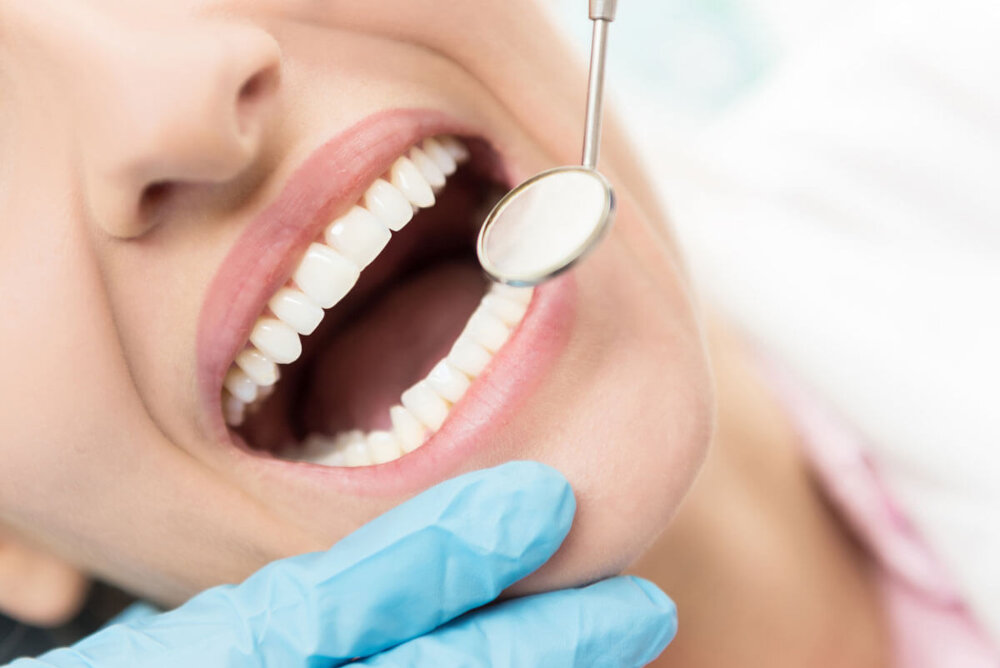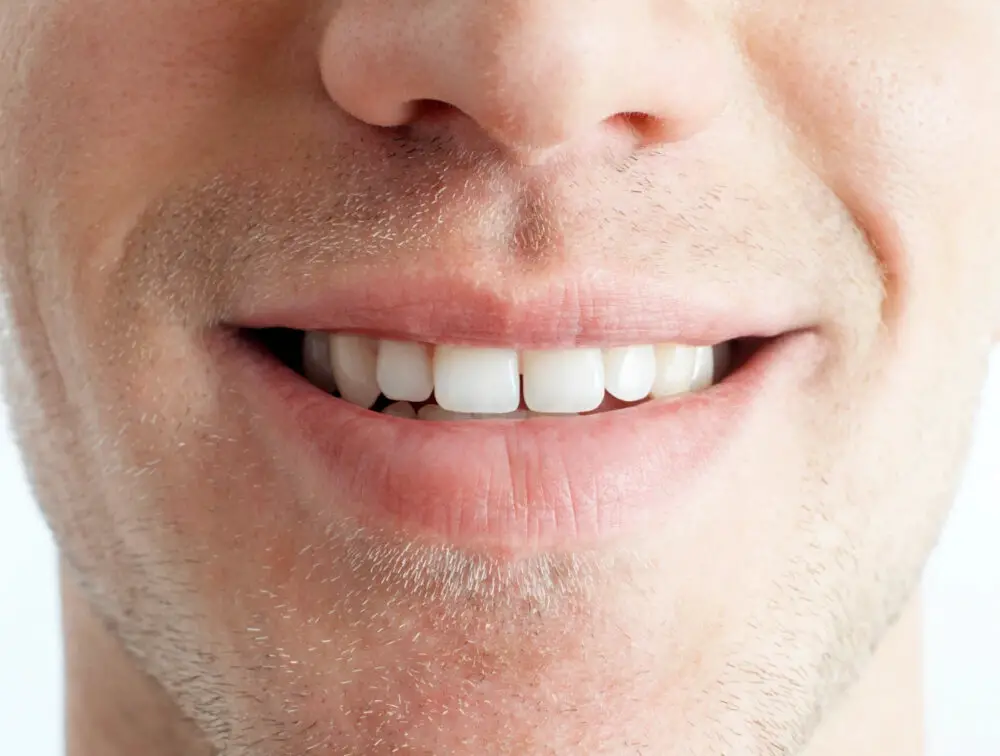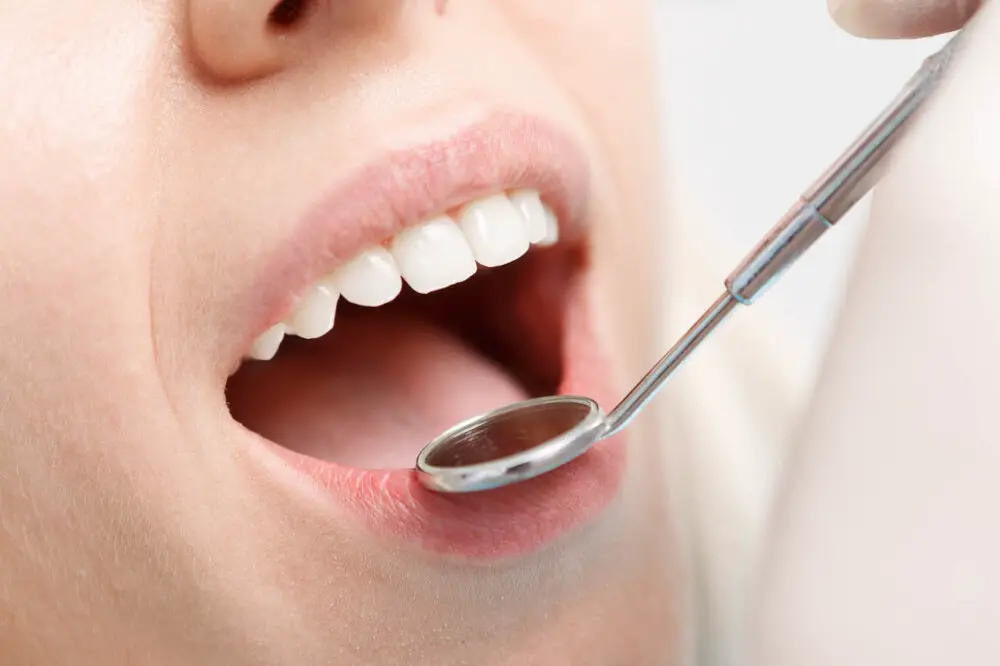Perfect Teeth: Exploring the Characteristics of a Winning Smile

A great smile is often considered a symbol of confidence, beauty, and success. It is the first thing that people notice about you, and it can leave a lasting impression. A perfect set of teeth, often referred to as a \winning smile,\ can make a significant difference in how people perceive you. However, achieving a perfect smile is not always easy, as it involves several factors such as genetics, lifestyle, and oral hygiene. In this article, we will explore the characteristics of a winning smile and how to achieve it. We will delve into the science behind what makes a perfect set of teeth, including factors such as symmetry, color, and alignment. We will also discuss the different methods available to enhance your smile, from basic oral hygiene practices to more advanced cosmetic procedures, such as teeth whitening and veneers. Whether you are looking to improve your smile for personal or professional reasons, this article will provide you with the knowledge and tools to achieve the perfect set of teeth.
A winning smile is an essential aspect of a person’s appearance and personality. It can help build self-confidence, make a great first impression, and leave a lasting positive impact. A smile is often the first thing people notice about someone, and a winning smile can convey warmth, approachability, and sincerity. It can also enhance one’s professional and personal relationships, as it can make others feel more comfortable and at ease. Additionally, a winning smile can also indicate good oral health and hygiene, which is important for overall well-being. Therefore, investing in a healthy and attractive smile can have a significant impact on one’s life and should not be overlooked.
A winning smile is more than just a display of white teeth. It is a combination of various factors that come together to create an attractive and confident smile. A winning smile starts with healthy teeth and gums, as well as proper oral hygiene. It also includes factors such as the alignment and shape of teeth, the color of teeth, and the overall facial symmetry. A bright, genuine smile that reaches the eyes is also an essential characteristic of a winning smile. When all these factors come together, a winning smile can boost self-esteem, make a great first impression, and leave a lasting impact on those around you.
Symmetry

Symmetry plays a crucial role in determining the beauty of a smile. It is the quality of being made up of exactly similar parts facing each other or around an axis. In terms of teeth, symmetry refers to the evenness and balance of the teeth and how they align with the lips and gums. A symmetrical smile is considered aesthetically pleasing and attractive. The symmetry of a smile is determined by the shape, size, and positioning of the teeth. The upper and lower incisors should be centered with the middle of the face, and the teeth should be evenly spaced and sized. However, achieving perfect symmetry in a smile is not always possible, and minor asymmetries can add character and uniqueness to a smile. Some people may have a slight deviation in the alignment of their teeth, which can be corrected with orthodontic treatment. In other cases, asymmetry can be caused by missing or misshapen teeth, which can be restored with cosmetic dentistry procedures such as veneers or bonding. Regardless of the cause, achieving symmetry in a smile can greatly enhance its appearance and boost a person’s self-confidence.
Symmetry is an important characteristic of a winning smile. In relation to teeth, symmetry refers to the alignment and balance of the teeth in the upper and lower jaws. A symmetrical smile is aesthetically pleasing and creates a sense of harmony. When the teeth are uneven or misaligned, it can create a distracting focal point that takes away from the overall appearance of the smile. Achieving symmetry in the teeth can involve a variety of dental treatments, such as braces, veneers, or dental implants, depending on the specific needs of each individual patient. By addressing issues with symmetry, a dentist can help their patients achieve a more confident and attractive smile.
Symmetry is an essential characteristic of a winning smile. When we smile, our brain automatically processes the symmetry of our teeth and facial features. A symmetrical smile indicates healthy and well-aligned teeth, which are perceived as attractive and aesthetically pleasing. Additionally, symmetry creates balance and harmony in the face, making a person’s smile more inviting and friendly. Asymmetrical features can distract from a smile’s impact and make it less appealing. Therefore, it is crucial to maintain symmetry in dental treatments to achieve the perfect smile. Overall, symmetry plays a vital role in creating an eye-catching and winning smile that exudes confidence and charisma.
Symmetrical and asymmetrical teeth can have a significant impact on the appearance of one’s smile. Symmetrical teeth are evenly positioned, with the same size and shape, creating a harmonious and balanced look. Asymmetrical teeth, on the other hand, have irregularities in size, shape, and positioning, which can lead to a less balanced and less aesthetically pleasing smile. Some examples of symmetrical teeth can include perfectly aligned front teeth with a uniform size and shape, while asymmetrical teeth might have misaligned, overlapping or crooked teeth, creating a lopsided smile. However, it’s important to remember that both symmetrical and asymmetrical teeth can be beautiful and unique in their own way and that there are various treatments available to improve the appearance of teeth.
Color

Color is one of the most important aspects of a winning smile. The perfect teeth should have a uniform color that is neither too yellow nor too white. Teeth that are too yellow give the impression of poor oral hygiene, while teeth that are too white can look fake and unnatural. The ideal color for a winning smile is a shade of white that is bright and clean, yet still looks natural and healthy. The color of teeth can be affected by a variety of factors, including genetics, age, and lifestyle habits. For example, smoking and drinking coffee or red wine can cause teeth to become discolored and stained over time. Regular brushing and flossing, as well as professional teeth cleanings and whitening treatments, can help to maintain the natural color of teeth and keep them looking their best. When it comes to creating a winning smile, the color of teeth is just as important as their shape and alignment.
Tooth color is a crucial aspect of a winning smile as it can greatly affect a person’s overall appearance and confidence. Teeth that are discolored, stained, or yellowed can give the impression of poor oral hygiene, unhealthy habits, and even age. On the other hand, teeth that are bright, white, and evenly colored can convey good health, youthfulness, and a confident personality. The importance of tooth color is further highlighted by the fact that it is one of the most noticeable features of a person’s smile. Therefore, maintaining a healthy and attractive tooth color through proper oral hygiene, lifestyle changes, and dental treatments can significantly enhance a person’s overall appearance and self-esteem.
There are several factors that influence the color of our teeth. Genetics is one of the most significant factors, as some people are simply born with darker or yellower teeth than others. Another vital factor is diet, particularly the consumption of dark-colored beverages like coffee, tea, and red wine, as well as foods that are high in pigments such as berries, beets, and turmeric. Lifestyle habits such as smoking or using tobacco products can also cause tooth discoloration by leaving stains on the surface of the teeth. Poor oral hygiene can also lead to tooth discoloration, as plaque buildup over time can cause the teeth to appear yellow or brown. Understanding these factors and taking steps to mitigate their effects can help to maintain a bright, healthy smile.
Teeth whitening is a popular cosmetic treatment that can help enhance the appearance of one’s smile. There are several options available for teeth whitening, including in-office treatments, at-home treatments, and over-the-counter products. In-office treatments, such as laser whitening or bleaching, are performed by a dental professional and can provide quick and dramatic results. At-home treatments, such as custom-made whitening trays or strips, are prescribed by a dentist and can be used in the comfort of one’s own home. Over-the-counter products, such as whitening toothpaste or strips, are readily available at drugstores and can provide a more affordable option for those looking to improve the color of their teeth. It’s important to consult with a dentist to determine the best teeth whitening option for your individual needs and to ensure the treatment is safe and effective.
Alignment

Alignment plays a crucial role in determining the beauty of a smile. Straight, symmetrical teeth create an aesthetically pleasing appearance that can boost self-confidence and leave a lasting impression on others. Misaligned teeth, on the other hand, can detract from the overall attractiveness of a smile and even cause functional problems such as difficulty biting and chewing. Orthodontic treatments like braces, clear aligners, and retainers can help correct misalignment and create a more harmonious smile. Beyond the cosmetic benefits, proper alignment can also contribute to better oral health. Straight teeth are easier to clean and maintain, reducing the risk of tooth decay, gum disease, and other dental issues. They also distribute biting forces more evenly across the teeth, reducing the likelihood of wear and tear or jaw problems. Patients who invest in orthodontic treatment to improve their alignment can enjoy not only a more beautiful smile but also a healthier one.
Teeth alignment, also known as orthodontic treatment, refers to the process of straightening crooked, crowded, or misaligned teeth to achieve a more aesthetically pleasing and functional smile. This involves the use of various orthodontic appliances, such as braces, clear aligners, or retainers, to gradually shift the teeth into their proper position over time. Proper teeth alignment not only enhances the appearance of one’s smile but also improves their bite, speech, and overall oral health. It is important to seek the guidance of a qualified orthodontist to determine the most appropriate treatment plan for achieving optimal teeth alignment.
Alignment of teeth is a crucial factor in achieving a winning smile. When teeth are aligned correctly, they not only look aesthetically pleasing but also function optimally. Straight teeth distribute bite forces evenly, which reduces the risk of tooth wear, gum disease, and jaw problems. Additionally, proper tooth alignment helps maintain good oral hygiene since crowded or crooked teeth can trap food particles that are difficult to remove with brushing alone. A winning smile is not just about the color or shape of teeth, but also about their alignment. Therefore, orthodontic treatment such as braces or clear aligners can help improve tooth alignment, resulting in a healthy, confident, and winning smile.
Orthodontic treatment refers to the correction of teeth and jaw positioning in order to improve the overall appearance and functionality of one’s mouth. Braces are the most traditional form of orthodontic treatment, consisting of metal brackets and wires that are adjusted over time in order to shift teeth into place. Invisalign, on the other hand, uses clear plastic aligners that are custom-made to fit the patient’s teeth, gradually moving them into the desired position. Both options have their advantages and disadvantages, and the choice of treatment will depend on the patient’s individual needs and preferences. Regardless of the chosen treatment, orthodontic intervention can provide not only a beautiful smile but also improved oral health and overall well-being.
Misaligned teeth can have a variety of appearances, including overcrowding, gaps, and crookedness. Overcrowding occurs when there is not enough room in the mouth for all of the teeth to fit properly, causing them to overlap and twist. Gaps are spaces between teeth, which can be caused by missing teeth or small teeth. Crookedness is when teeth are not straight and can appear slanted or uneven. Aligned teeth, on the other hand, are straight, evenly spaced, and properly positioned in the mouth. These teeth can create a beautiful smile that is both symmetrical and aesthetically pleasing.
Proportions

Proportions play a crucial role in achieving the perfect smile. The ideal smile consists of teeth that are proportionate to the size and shape of the face, and the lips that frame them. The golden ratio, a mathematical concept, is often used as a guide to determine the ideal proportions of teeth in relation to the face. This ratio involves dividing the width of the front teeth by the width of the lateral incisors, and the width of the lateral incisors by the width of the canine teeth. When the resulting ratios are close to 1.618, the golden ratio, the teeth are considered to be in ideal proportion. However, it is important to note that the golden ratio is not a strict rule and that individual variations in facial structure must also be considered when determining the ideal proportions of the teeth. In addition to the golden ratio, other factors such as the shape and size of the individual teeth, the alignment of the teeth, and the amount of gum tissue visible when smiling also play a role in achieving the perfect smile. A skilled cosmetic dentist can use a combination of techniques such as orthodontics, veneers, and gum contouring to create a smile that is both beautiful and natural-looking. By taking into account the proportions of the face and the individual characteristics of the teeth, a winning smile can be achieved that enhances the overall appearance of the face and boosts confidence and self-esteem.
Teeth proportions refer to the size, shape, and positioning of teeth in relation to one another and to the rest of the face. A winning smile is often characterized by teeth that are well-proportioned, with the front teeth being slightly larger than the surrounding teeth, creating a gentle curve. The upper teeth should also be slightly longer than the lower teeth, with the two central incisors being the longest. When teeth are too small or too large for the face, or when they are misaligned or crowded, it can detract from the overall appearance of the smile. Achieving ideal teeth proportions can often be achieved through orthodontic treatment, such as braces or clear aligners, or through cosmetic dentistry procedures like veneers or bonding.
Proportions play a crucial role in creating a winning smile. The golden ratio, also known as the divine proportion, is a mathematical concept that has been used for centuries to create aesthetically pleasing designs. This ratio is also used in dentistry to create a balanced smile. When the proportions of teeth are ideal, they create a harmonious balance with the rest of the face, resulting in a beautiful smile. The size, shape, and position of teeth are all considered when creating a perfect smile. A skilled dentist will take into account the individual’s facial features, lip shape, and gum line to create a smile that is unique to them. By using the principles of proportion, a winning smile can be achieved, leaving a lasting impression on those around us.
Cosmetic dentistry procedures offer various options for improving tooth proportions, helping people achieve the perfect smile they desire. Veneers, thin porcelain shells, are custom-made to fit over the existing teeth and can improve their shape, size, and color. Bonding, a composite resin material, can also be used to fix uneven teeth or gaps between them. It can be sculpted and polished to match the natural teeth, giving a seamless look. Teeth contouring, another option, involves removing small amounts of enamel to reshape the teeth and create a more symmetrical appearance. These procedures are safe, effective, and can provide a significant improvement in the appearance of one’s teeth.
When it comes to a winning smile, tooth proportions play a crucial role in determining its overall aesthetic appeal. Ideal tooth proportions are generally characterized by a harmonious balance between the width and length of the teeth, with the central incisors being slightly longer than the lateral incisors and canines. The width of the central incisors should also be around 80% of their length, while the lateral incisors should be about 60% of the central incisors’ width. Additionally, the teeth should be straight, symmetrical, and aligned with the midline of the face. Such tooth proportions create a pleasing, natural, and youthful smile that attracts attention and exudes confidence.
A winning smile is characterized by several key features that make it stand out from the crowd. Firstly, a perfect smile is symmetrical, with both sides of the mouth and teeth appearing equally balanced. Secondly, a winning smile features straight, white teeth that are well-aligned and free from any gaps or discoloration. Thirdly, a great smile highlights the lips, with full and shapely lips that complement the teeth and provide a natural frame for the smile. Finally, a winning smile is confident and inviting, conveying warmth and openness to those around you. By paying attention to these key features, anyone can achieve a winning smile that will leave a lasting impression on those they meet.
Proper dental care and regular checkups are essential for maintaining good oral health, preventing dental problems, and achieving a winning smile. Neglecting dental care can lead to tooth decay, gum disease, and other oral health issues that can affect not only your teeth but also your overall health and well-being. Brushing and flossing regularly, eating a healthy diet, and visiting the dentist regularly are simple steps that can help keep your teeth healthy and bright. Regular dental checkups can also help detect and treat dental issues early before they become more serious and expensive to treat. So, if you want to achieve a perfect smile and maintain excellent oral health, prioritize proper dental care and regular checkups.
A winning smile can have a significant impact on both self-esteem and overall health. The confidence that comes with a beautiful smile can lead to improved mental health, as individuals feel more comfortable and confident in their interactions with others. On a physical level, maintaining good oral hygiene and seeking orthodontic treatment when necessary can prevent and treat a variety of health issues, including gum disease, tooth decay, and even heart disease. A winning smile is not just about aesthetics, but rather a reflection of one’s commitment to self-care and overall well-being.
Conclusion

In conclusion, a winning smile is not only about having perfectly aligned teeth but also a combination of various characteristics that contribute to its appeal. Factors such as tooth color, shape, size, and alignment play a significant role in creating the perfect smile. Additionally, facial features, such as lip shape and symmetry, also contribute to a winning smile. Maintaining good oral hygiene, regular dental visits, and seeking orthodontic treatment when necessary can help achieve a perfect smile. However, it is important to remember that a smile is not just about physical appearance, but also about the confidence and happiness that radiates from within. Therefore, a winning smile is a reflection of both physical and emotional well-being.






